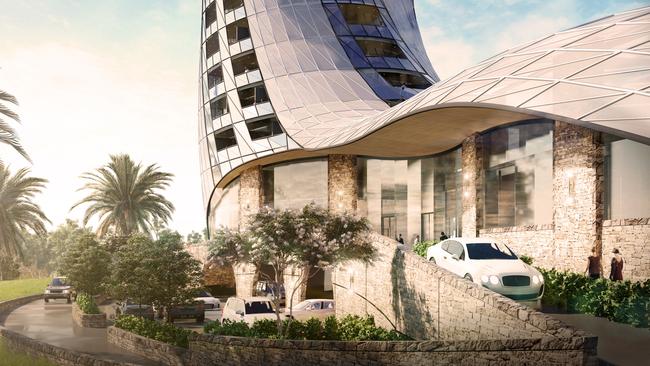One rule for the rich ... Barossa residents fighting $50m Oscar development say policy switch overrides heritage concerns
A group of Barossa residents fighting a $50m tourist development they’ve branded “The Slug” have told a court that money talks under SA’s new development rules.
Barossa, Clare & Gawler
Don't miss out on the headlines from Barossa, Clare & Gawler. Followed categories will be added to My News.
A lawyer for residents fighting the proposed $50 million Oscar hotel at Seppeltsfield in the Barossa Valley has criticised State Government planning laws that create a two-tier system – making it easier for expensive developments to be approved with little public input.
David Billington, who is acting for four residents whose properties are next door to Seppeltsfield, told a hearing into the Oscar development – nicknamed “the Slug” by some in the Barossa – that money made it easier to get developments approved.
“This is a consequence of a political policy,’’ Mr Billington told the Environment, Resources and Development Court.
“Which is to this effect: If people are going to spend a lot of money in a primary production zone, well we shouldn’t let the pesky public review or appeal decisions.’’
On April 9 last year, new regulations came into force under then-state planning Minister and Barossa MP Stephan Knoll, which made it easier for tourism accommodation to be built in regional areas if it was valued at more than $3 million.

The new regulation meant projects previously classified as category three defaulted to category two. A category two development means only immediate neighbours can lodge an objection and have 14 days to do so and no appeal rights.
A category three would mean anyone, anywhere in the state, could object and appeal rights are preserved.
“If you have a lot of money you get cat two,’’ Mr Billington said.
“If you don’t have the money, well, you are with the plebs, you have to deal with third party appeal rights and so forth.’’
Mr Billington argued this week there were several reasons the ERD should reclassify the Oscar as a category three development.
He said the heritage listing that applied to the Seppeltsfield winery should also include the surrounding vineyards as well as to buildings such as the 1890 winery, bond store, mausoleum as well as the palm trees which frame the entrance road. Some vines will be removed if the development goes ahead.

“The winery has been known to the world and has been known since the 1860s as Seppeltsfield winery, as a large tract of land that takes in several vineyards,’’ he said.
Mr Billington also said a 1km road that would link the winery to the proposed development should ensure it was classified as a category three development.
However, Stuart Henry, for Intro Architects which submitted the development proposal, said the vineyards should not be considered as part of the heritage listing.
“No one ever contemplated the listing of the vineyards,’’ Mr Henry said. “No one ever analysed the heritage listing criteria that would justify the listing of the vineyards.’’
The hearing continues.



